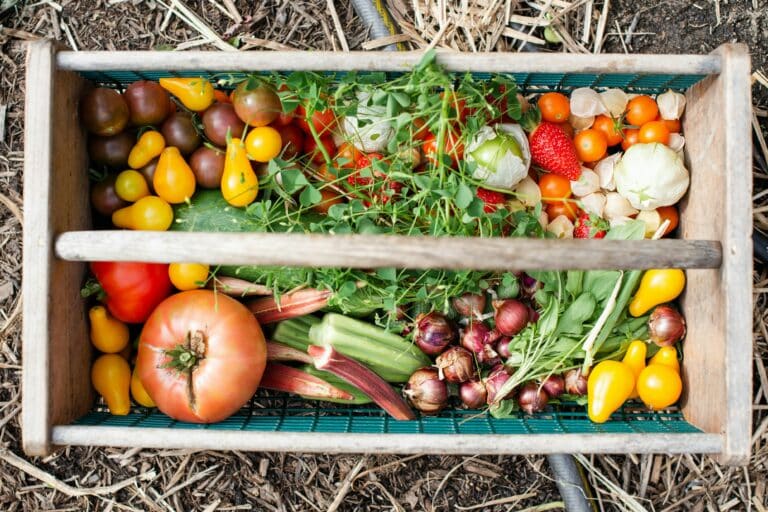Hey there, fellow homesteaders! Lately, there’s been a big shift towards sustainability and self-sufficiency. More and more people are waking up to environmental issues, economic ups and downs, and the dream of living a more independent, fulfilling life. It’s all about reducing our carbon footprint, ensuring a healthier planet for the future, and taking control of our food, energy, and overall well-being. This movement is all about resilience, mindful living, and taking charge of our lives while being kind to the Earth.
What Do We Mean by Sustainability and Self-Sufficiency?
Although they often go hand-in-hand, sustainability and self-sufficiency are two sides of the same coin. Sustainability is all about meeting our needs today without messing things up for future generations. It’s about smart resource management and keeping our environmental impact low. Self-sufficiency, meanwhile, is about being able to take care of your needs independently, like growing your own food, generating your own energy, and learning practical skills.
For homesteaders, these concepts translate into actions like growing organic produce, harnessing renewable energy, and mastering skills like food preservation and DIY projects. By embracing these practices, we create a healthier, more resilient lifestyle, reduce our dependence on external systems, and become better stewards of the environment. It’s a win-win for us and the planet!
Living Sustainably on the Homestead
Organic Farming and Gardening Practices
Starting with organic farming and gardening, you can significantly impact both your health and the environment. By avoiding synthetic pesticides and fertilizers, you maintain soil fertility, boost biodiversity, and prevent harmful runoff into water bodies. Composting turns kitchen scraps into rich soil, and techniques like crop rotation and companion planting keep the soil healthy and plants resilient. These methods not only yield nutritious produce but also support a balanced ecosystem full of beneficial insects and wildlife.
Water Conservation Strategies
Water conservation is key, especially in drought-prone areas. Rainwater harvesting, drip irrigation, and greywater systems are fantastic ways to reduce your water footprint. Collecting rainwater from rooftops, watering plants efficiently, and reusing water from sinks and showers help ensure a steady water supply for your homestead, all while conserving this precious resource.
Renewable Energy Solutions
Switching to renewable energy is a game-changer. Solar panels can power your homestead with clean, abundant energy. Biomass energy, from materials like wood and crop residues, is great for heating and cooking. These solutions cut down on fossil fuel use, lower greenhouse gas emissions, and enhance your energy independence, making your lifestyle more resilient and self-reliant.
Achieving Self-Sufficiency
Being self-sufficient starts with food. Keep a year-round garden filled with a variety of fruits and veggies, and consider raising livestock for a steady supply of meat, eggs, and dairy. Learn food preservation methods like canning, drying, and freezing to enjoy your harvest long after the growing season.
Develop practical skills too. Basic carpentry and home repair skills are invaluable, as are sewing, knitting, and making household products like soap and candles. These abilities reduce your reliance on store-bought goods and help you meet your needs independently.
Building a Self-Sufficient Homestead Community
A supportive community is vital. Sharing resources, knowledge, and skills with neighbors can make sustainable living easier. Whether it’s trading tips, lending tools, or bartering goods and services, a strong community network enhances resilience and support. This cooperative spirit fosters a sense of unity and mutual aid, making everyone’s homesteading journey a little smoother.
Overcoming Challenges
Of course, there are challenges. Weather fluctuations, pests, and initial costs can be tough. But strategies like crop diversification, integrated pest management, and budgeting can help. Remember, setbacks are learning opportunities. Share your experiences and solutions with the community to build resilience together.
The Rewards of a Sustainable and Self-Sufficient Lifestyle
The rewards are immense. Reducing your carbon footprint, improving biodiversity, and consuming fresh, organic produce are just the start. You’ll enjoy better physical health, and mental well-being from a closer connection to nature, and stronger family and community bonds. Plus, you’ll gain a profound sense of accomplishment and harmony with the natural world.
Conclusion
In a nutshell, sustainability and self-sufficiency are key to modern homesteading, bringing numerous benefits to you and the environment. Start small—every effort counts. Share your experiences, tips, and insights with us in the comments below. Let’s inspire and support each other on this rewarding journey. Don’t miss out on the latest updates and tips—subscribe to our blog and follow us on social media for daily inspiration and to connect with fellow homesteaders. Happy homesteading!

